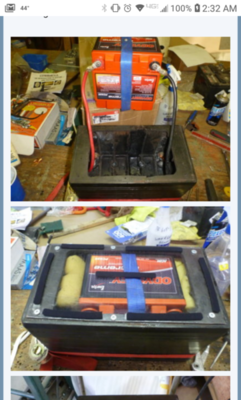vegiguy
Well-Known Member
Everything that I had gotten done on my '73 RR project was working fine, then yesterday when I went to see if the original radio that I had just put back in worked nothing happened when I turned to the key on. I tried to start it and it wouldn't even start. I checked the voltage and I have about 12 volts everywhere there should be 12 volts - including the ignition switch power wire and fuse box - when the key is turned off, but then when I turn the key to the ON position (not start) everything goes dead, even the large terminal on the starter relay. The battery is less than a year old as is the wiring on this car. The ignition switch I replaced several years ago with a NORS one I got off of eBay since I've had trouble in the past with new ignition switches that are invariably made in developing countries like Mexico or China (not that I have anything against these countries). I put the charger on the battery last night in case it needed it and that didn't help.
I'm thinking the ignition switch went bad, but I'm still baffled by why literally everything except the battery went dead when it is turned on since the switch is only one of several things that that receives a power wire from the main under-dash wire splice; you'd think the rest of the power wires would still have power. In my many years of working on cars I have never seen anything like this. Can any one think of something else that could be causing this before I go to the trouble of replacing the ignition switch?
Thanks for any ideas.
I'm thinking the ignition switch went bad, but I'm still baffled by why literally everything except the battery went dead when it is turned on since the switch is only one of several things that that receives a power wire from the main under-dash wire splice; you'd think the rest of the power wires would still have power. In my many years of working on cars I have never seen anything like this. Can any one think of something else that could be causing this before I go to the trouble of replacing the ignition switch?
Thanks for any ideas.

















